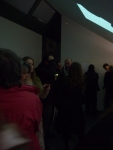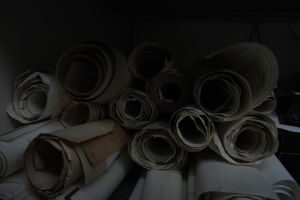Landscapes refuse to be disciplined. They make a mockery of the oppositions that we create between time [History] and space [Geography], or between nature [Science] and culture [Social Anthropology].
(Barbara Bender cited in Doreen Massey, 2006, “Landscape as a Provocation: Reflections on Moving Mountains,” Journal of Material Culture 11 (33): 34.)
An Incomplete Selection of Exhibited Works
Gallery

This gallery contains 7 photos.
From the Archive
Photos from the archive taken by Annie Suganami.
http://hint.fm/wind/
If framing creates the very condition for the plane of composition and thus of any particular works of art, art itself is equally a project that disbars, distends, and transforms frames, that focuses on the intervals and conjunctions between frames. In this sense the history of painting, and art after painting, can be seen as the action of leaving the frame, the frame exploding through the movement it can no longer contain. Art thus captures an element, a fragment, of chaos in the frame and creates or extracts from it not an image or representation, but a sensation or rather a compound or a multiplicity of sensations, not the repetition of sensations already experienced or available beyond or outside the work of art, but those very sensations generated and proliferated only by art. Framing is the raw condition under which sensations are created, metabolised, released into the world, made to live a life of their own, to infect and transform other sensations.
Grosz, Elizabeth Chaos, Territory, Art: Deleuze and the Framing of the Earth New York: Columbia University Press p.18
British Sea Defence
Visitors Books

Maps (Various)
Image
Digitized Visitors Books: 1, 2, 3








